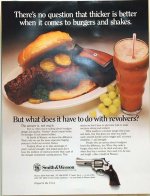Crucible Powdered metals recently went bankrupt; a major supplier of the highest grades of composite carbide metals.
If you are referring to Crucible Industries, formerly Crucible Steel, in Syracuse, N.Y.....yes, they went bankrupt, then almost immediately reorganized and opened under the new name. Same people running it. This was maybe 3 or so years ago. A friend of mine works there as a machinist. He has been putting in 60 hour weeks as of late.






